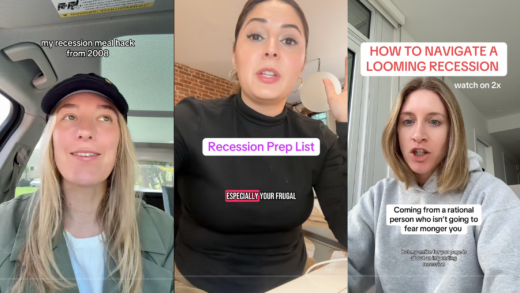The practise of cartography or mapmaking, has been an essential part of human history for centuries, tracing back to the early clay tablets of Babylonian societies to those charted by European explorers during the height of the Age of Exploration. Beyond the need for determining geographical and political borders, maps have come to play a pivotal role in our everyday lives. No longer limited to rolled up scrolls or folded pieces of paper, digital cartography has gained prominence with the advent of modern technology. Allowing not only for greater accuracy but added features such as estimating distances and travel times, digital maps and navigation systems provide benefits for both businesses and everyday citizens, enabling us to access services with greater ease and to travel with greater confidence.
Like so many of the world’s leading explorers of the early modern world, we continue to find ourselves navigating unfamiliar terrain. Despite the progress made in today’s digital cartography, not all maps are made equally, leading to significant disparities in the quality of navigation services across the globe.
Point A to Point $$$
Today, the majority of smartphone users are avid Google Maps users with 67% opting to use the platform over other alternatives such as Google’s own Waze or Apple-owned rival Apple Maps. Launched in 2005, Google Maps has expanded in functionality over time, now offering real-time traffic conditions and route planning for a variety of transportation methods. In recent years, Google Maps has generated a new revenue stream for the search engine giant, offering the opportunity to advertise businesses by way of paid, sponsored listings that bump them to the top of search results, significantly skewing the search process for users.
While we rely on Google Maps to get us from point A to point B, it is difficult to argue that it does this objectively. With each click––the planning of your route from where you are to your next meal––Google Maps has inevitably facilitated customer acquisition efforts for a business, making it the most effective, profit-maximising advertising campaign for a business. The modern-day mapped landscape is monetised. Most of all, however, the mapped landscape is skewed to benefit businesses with a greater level of digital literacy as much as a budget for advertising efforts.
SEE ALSO: Everything you need to know about serverless: What does the future hold?
The earliest cartographers had no assistance from satellite imagery or a scientifically accurate study of terrain, leading to the earliest maps being tainted by creator’s bias. Whether it be ideological or nationalistic by nature, map-makers would often over or under-emphasise certain areas for effect. Despite its access to greater resources that lend towards greater accuracy, the same bias could be attributed to Google Maps, all in the name of an ever-competitive global digital economy.
Data is currency
Beyond skewed results, there’s also the fact that the many conveniences that we rely upon today now come at the expense of our own privacy. Beyond the controversies pertaining to the images captured for the platform’s Street View function, it was also found that in 2012, these image collection efforts inadvertently allowed Google to collect user’s payload data over the course of two years. This included sensitive data such as telephone numbers, emails, passwords, and even medical records, sent over open, unencrypted Wi-Fi networks.
Other navigation platforms have tried to mitigate this issue by limiting the extent of their collection data. Apple Maps, for example, only collects subsections of a given user’s route and data is anonymised from the moment it is recorded on your device. Any notifications on one’s personal device regarding your preferred route is “learned, remembered and delivered locally” rather than from Apple’s servers. Apple’s profit motive, of course, is to sell devices. Improving mapping services is only tangentially related to that goal, which partially explains the lesser quality of maps vis-a-vis Google Maps.
Despite such developments on an infrastructural level, applications are another story. The New York Times recently published the results from their investigation of how location data is collected from mobile applications, finding that every two seconds, data is aggregated from mobile devices and is sold to businesses. The extent to which this data is anonymised varies from application to application, but the sentiment is clear: our data is undeniably of value. In the case of Google, by knowing where you are, location data transmitted from your smartphone can be aggregated to inform other Google Maps users of how busy a restaurant might be at a given point in time or the severity of traffic in a particular area of a city. While these are insights of tremendous value, we seem to have forgotten, or perhaps are unaware of the true cost at which they are obtained.
Unearthing bias
“You are here”, except you’re not. For those residing in comparatively underdeveloped regions in the world, there may not even be a “here”, with mapped landscapes lacking in detail and extensiveness.
To originally tackle this problem, Google Maps launched its crowdsourcing platform improvement tool, Map Maker with the aim of improving road and business information in areas where local mapping is inadequate. However, in 2017, the programme came to an end with its crowdsourcing element being carried over to the Google Local Guides scheme which focuses more so on reviewing and adding new businesses to the Maps platform. Though a newcomer in comparison, Apple Maps faces a similar problem in emerging countries. In India, for example, the platform has no navigation support and even lacks the most notable landmarks in major cities across the country. In comparison, across several cities in the United States, the platform even offers indoor maps in several airports and malls across the country.
Whether it’s an increased emphasis on businesses rather than navigation or a prioritisation for certain countries over others, it’s clear where the pitfalls are in ensuring a navigation system that delivers on its true use for users across the globe.
Guided by the vision where anyone could have access to mapping services, irrespective of their location, economic status, and concerns about privacy, I created DMapp. Similarly leveraging on a crowdsourcing model, DMapp incentivises contributors (Explorers) to add new routes to the platform and are automatically compensated each time a user (Traveler) opts to use the route. Enabled by smart contracts running on the Zilliqa blockchain platform, payments are made securely and directly to Explorers, without the need for relying upon intermediaries. Meanwhile, local governments, municipal councils, and NGOs can equally help to contribute towards prioritising the mapping of particular areas by having pools of money allocated to qualifying Explorers.
SEE ALSO: DevOps and neuroscience: Trying to influence culture as part of a DevOps evolution
Whenever an Explorer contributes a route to DMapp, their payment details (address on a blockchain) are mapped to their contributed route within a Trusted Execution Environment (TEE). When a Traveler uses this route, the payment details are looked up within the TEE and a micro-payment is automatically executed without any further user interaction. The beauty of using a TEE is that, because of the way they are created, the payment details are stored completely privately––even if I, the maintainer of the TEE, wanted to spy on Explorers via their payment details, I wouldn’t be able to. The TEE simply wouldn’t allow it.
Beyond travelers on holiday, adequate mapping serves a basic utility to the average citizen. For those residing in a remote village, it would mean the difference between waiting minutes rather than hours, for emergency services; for those working with food delivery companies or ride-hailing services, it could mean earning more wages for a day’s work. For some, it also means easily bypassing language barriers in unfamiliar surroundings while for small businesses, it means a levelled playing field between larger competitors. The ability to navigate with confidence and with trust in the resources we have at our disposal should not need to be earned––it should be a right.
As we continue to navigate an increasingly digitised world and emerging nations work to keep apace, it’s time for maps to be designed with everyday users and consumers in mind. After all, not all those who are lost wish to wander.
The post X doesn’t mark the spot: Unearthing the bias in modern-day navigation systems appeared first on JAXenter.
Source : JAXenter









